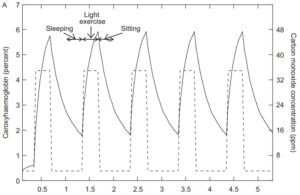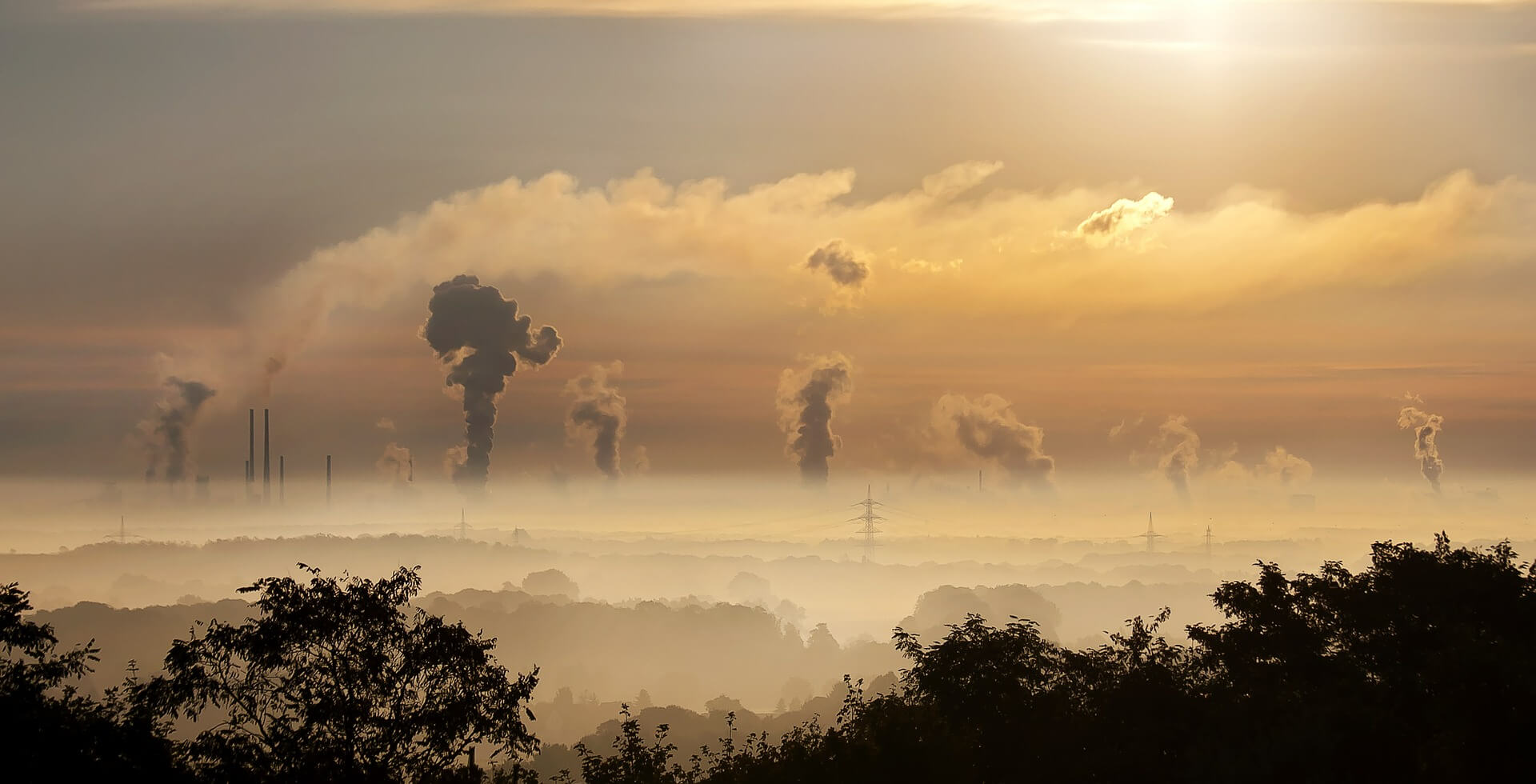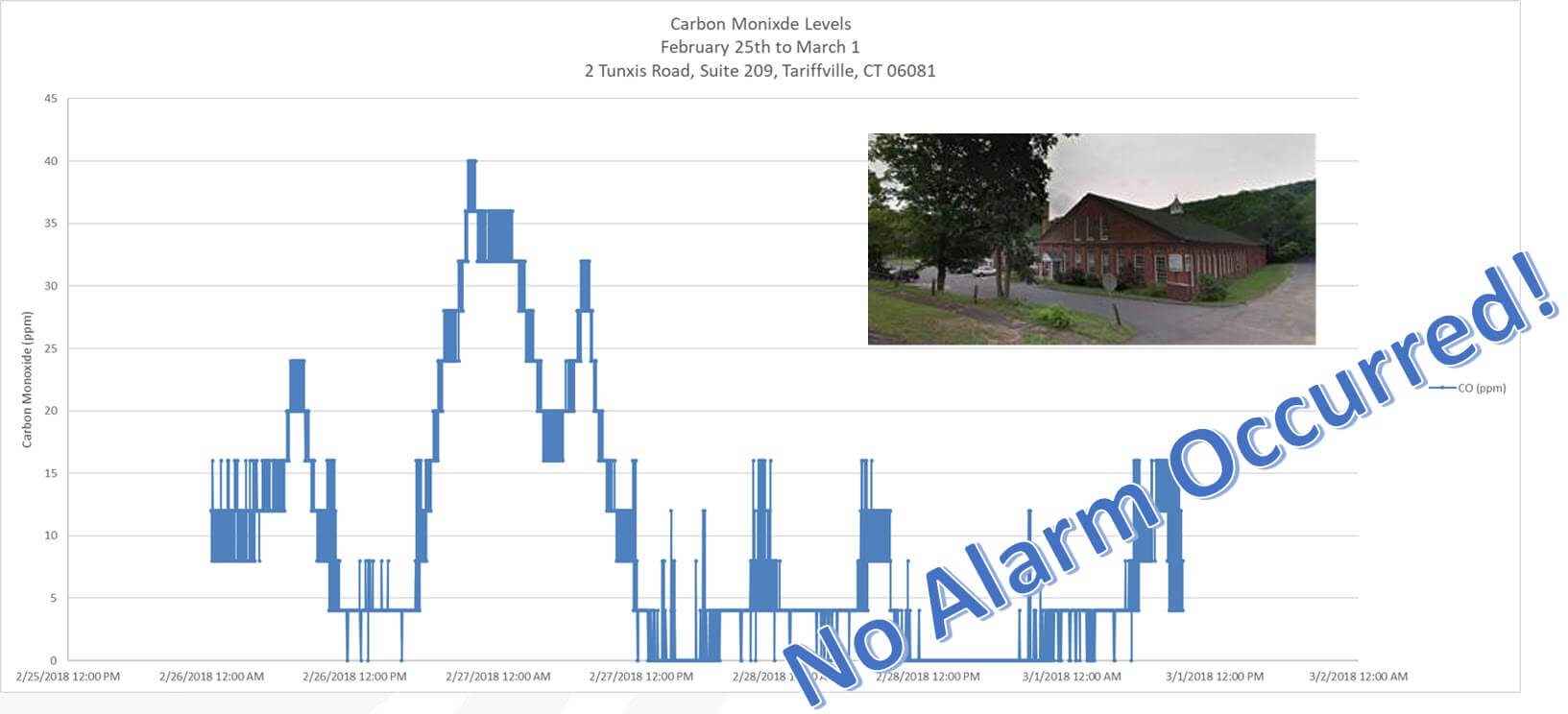Carbon Monoxide (CO) is a humane made air contaminate generated during an incomplete combustion process most notably created internal combustion engines or heaters fuelled by oil, gas or kerosene. The following reasons are strong evidence every area where humans work and sleep should have a CO alarm with data logging capabilities.
- Silent Killer – Carbon monoxide (CO) is a gas that can kill you quickly. It is called the “silent killer” because it is colorless, odorless, tasteless and nonirritating. If the early signs of CO poisoning are ignored, a person may lose consciousness and be unable to escape the danger.
- Physiological impact – Carboxyhemoglobin, or carboxyhaemoglobin is a stable complex of carbon monoxide and hemoglobin that forms in red blood cells upon contact with carbon monoxide. It is very difficult to measure the levels that exist in a person’s body. Carboxyhemoglobin is hemoglobin that has carbon monoxide instead of the normal oxygen bound to it. Carbon monoxide has a much stronger binding to hemoglobin than oxygen, up to 200 times stronger. Fetal hemoglobin has
 an even higher affinity for CO than does adult hemoglobin.Carboxyhemoglobin is formed in carbon monoxide poisoning and leads to oxygen deficiency in the body. The source of the carbon monoxide may be exhaust (such as from a car, truck, boat, or generator), smoke from a fire, or tobacco smoke. The level of carboxyhemoglobin is a measure of the degree of carbon monoxide exposure and has been thoroughly studied and simulated. The best evidence quoted by the experts suggests that the upper limit of normal COHb should be set at between 2 and 3 % for non-smokers and between 7 and 9 % for smokers. Figure 1 shows when a healthy adult male is exposed to CO levels of 35 ppm over an 8 hour period result in COHb levels of greater than 5.5%. According to the Centers for Disease Control and Prevention (CDC), approximately 15,000 visits to emergency departments (EDs) and around 500 deaths are caused by unintentional, non-fire-related carbon monoxide exposures alone each year. [2] Between 2004 and 2006, the highest estimated rate of ED visits for unintentional, non-fire-related carbon monoxide exposure in any age group was for children younger than 5 years (11.6 cases per 100,000).
an even higher affinity for CO than does adult hemoglobin.Carboxyhemoglobin is formed in carbon monoxide poisoning and leads to oxygen deficiency in the body. The source of the carbon monoxide may be exhaust (such as from a car, truck, boat, or generator), smoke from a fire, or tobacco smoke. The level of carboxyhemoglobin is a measure of the degree of carbon monoxide exposure and has been thoroughly studied and simulated. The best evidence quoted by the experts suggests that the upper limit of normal COHb should be set at between 2 and 3 % for non-smokers and between 7 and 9 % for smokers. Figure 1 shows when a healthy adult male is exposed to CO levels of 35 ppm over an 8 hour period result in COHb levels of greater than 5.5%. According to the Centers for Disease Control and Prevention (CDC), approximately 15,000 visits to emergency departments (EDs) and around 500 deaths are caused by unintentional, non-fire-related carbon monoxide exposures alone each year. [2] Between 2004 and 2006, the highest estimated rate of ED visits for unintentional, non-fire-related carbon monoxide exposure in any age group was for children younger than 5 years (11.6 cases per 100,000). - Regulatory requirements – ASHRAE, WHO, ACGIH, NIOSH, OSHA and UL all have time-weighted average (TWA) limits of recommended exposure limits (REL) ranging from 6 ppm to 70 ppm
- Early fire detection – Studies have shown that when data logging smoke alarms and data logging CO alarms are used in a building, it becomes possible to rate the severity of any smoke detected. Once CO begins to increase above normal levels, you know incomplete combustion is occurring.
- Low-level concentrations are very difficult to understand unless a special CO alarm with data logging capabilities is employed.
| COHb Concentration Levels | Associated Symptoms |
| 10% | Asymptomatic or a headache. Heavy smokers can have as much as 9% COHb. |
| 15% | Mild headache. |
| 25% | Nausea and serious headache. Fairly quick recovery after treatment with oxygen and/or fresh air. |
| 30% to 45% | As symptoms intensify, the potential for long-term effects increases especially in the case of infants, children, the elderly, victims of heart disease and pregnant women. |
| 50+% | Death |
Industry Environmental Limits
ASHRAE (American Society of Heating, Refrigerating and Air-Conditioning Engineers)
Recommended Exposure Limit (REL) > 9 ppm over an 8 hr. time-weighted average (TWA) is unhealthy
> 35 ppm over a 1 hr. TWA is unhealthy
WHO
CO > 10 ppm is unhealthy
UCLA Medical Center, EPA, ASHRAE and Health Canada
>= 10 ppm over an 8 hr. TWA
>= 90 ppm over a 15 min. TWA
WHO targets 2.5% COHb as normal limits
ACGIH
>25 ppm over an 8 hr. TWA
NIOSH (The National Institute for Occupational Safety and Health)
>35 ppm over an 8 hr. TWA
>200 ppm over a 15 min. TWA
OSHA
>50 ppm for an 8 hr. TWA
UL
Alarm when > 70 PPM after 1 hour TWA
Sets COHb (carboxyhaemoglobin ) limits at 10%,
Figure 2 shows measurements made over a 5 day period from an office building in Connecticut. No alarm was generated, but the data clearly shows the environment was unhealthy for greater than 8 hours.
Reference
https://www.ebmconsult.com/articles/lab-test-carboxyhemoglobin-level
https://acutecaretesting.org/en/articles/causes-and-clinical-significance-of-increased-carboxyhemoglobin
Determination of carboxyhaemoglobin in humans following low-level exposures to carbon monoxide
Nathalie H. Gosselin, Robert C. Brunet & Gaétan Carrier
https://emedicine.medscape.com/article/1009092-overview
https://www.nature.com/articles/pr199819
For non-cloud-based carbon monoxide alarm solutions that meet or exceed the latest UL 2034 standards, explore stand-alone Rely carbon monoxide detectors


